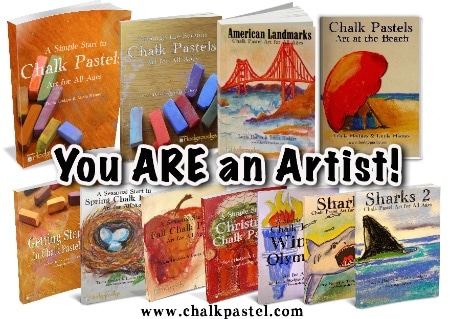Family Read-Aloud: Beyond the Picture Book
Posted by Michelle Osborn on
Welcome to Yellow House Book Rental! We are primarily a homeschool curriculum, rental service. However, we offer a variety of services. You can compare each one, at Yellow House Book Rental, and decide which is best for your family.
**This post contains affiliate links and we will be compensated if you make a purchase after clicking on affiliate links. Thank you!
Read-Aloud Series Part 1
I came across this excellent article, in my emails, written by Ruth Tennis, Rainbow Consultant , and just had to share it,
Snuggle up before bedtime, pull out a picture book and read to your preschooler. Many families read to their children in the early years. They know that reading aloud plays a significant role in a preschool child’s thinking and language development. Reading aloud to preschoolers increases their phonic and grammatical awareness, solidifies their language development and strengthens their reading readiness.

What about after that? Why read to a student who can read independently? Is there value to reading aloud to our older children? Apparently, many families choose not to. According to Scholastic’s 2015 Kids and Family Reading Report(KAFRR) which surveyed over 1000 children through age 17, 54% of children ages 5 and younger reported being read to. However, for kids age 6-8 (beginning readers), this number dropped to 34%. For ages 9-11 (independent readers), only 17% were being read to. In contrast, 40% of children in each of these two reader groups stated they wanted their parents to continue reading aloud. In addition, 83% of children up through age 17 said they really enjoyed being read to at home.
 Beyond children’s desire and enjoyment, there are multiple, research-supported reasons to make read-alouds a component of your home routine—no matter your children’s ages.Reading aloud models. Read-alouds model several key elements more deeply than what students would experience when reading on their own. Reading aloud models quality writing. According to Giorgis & Serafini inReading Aloud & Beyond, what we read, “models the possibilities.” Read-alouds expose us to complex ideas and rich, sophisticated language patterns in creative, yet understandable ways. Reading aloud alsomodels good reading and listening practices. Reading aloud doesn’t come naturally to everyone; it takes practice. As you are reading and encountering new books and ideas, you’re demonstrating strategies such as predicting, rereading, active listening, questioning, etc. Although audio books are a great tool, a live, “normal” reader shows the listener the reading process: how any text is handled, responded to and “digested.” Listening also builds attention spans and concentration.
Beyond children’s desire and enjoyment, there are multiple, research-supported reasons to make read-alouds a component of your home routine—no matter your children’s ages.Reading aloud models. Read-alouds model several key elements more deeply than what students would experience when reading on their own. Reading aloud models quality writing. According to Giorgis & Serafini inReading Aloud & Beyond, what we read, “models the possibilities.” Read-alouds expose us to complex ideas and rich, sophisticated language patterns in creative, yet understandable ways. Reading aloud alsomodels good reading and listening practices. Reading aloud doesn’t come naturally to everyone; it takes practice. As you are reading and encountering new books and ideas, you’re demonstrating strategies such as predicting, rereading, active listening, questioning, etc. Although audio books are a great tool, a live, “normal” reader shows the listener the reading process: how any text is handled, responded to and “digested.” Listening also builds attention spans and concentration.
Reading aloud creates language engagers. For years we’ve known that children who’ve been read to are stronger readers, score higher on reading tests. But why? What is actually happening when you listen to a read aloud? For one, your brain creates images. For example, in a 2015 study, doctors used MRIs to monitor brain activity while children listened to stories. They found that significantly stronger activity occurred in the brain’s semantic processing area (which forms mental images) for those children who had more at-home read aloud time. When we hear stories, our brain “translates” what we hear—even when reading a picture book—and creates images in our mind. When we listen to a read aloud, the brain concentrates on comprehension, on the “mental pictures.” The brain is also in a more active state listening to read-alouds than when watching the story play out on a screen, for example.
 Read alouds also build a larger language repertoire. Read-aloud books expose listeners to different vocabulary and usage. Book language is definitely different than speaking language. According to Jim Trelease’s The Read-Aloud Handbook, (at Amazon) our conversations use about 10,000 words. Books incorporate vocabulary and language structure much beyond the daily norm. Thus, read-alouds introduce and strengthen vocabulary. The more children hear new vocabulary and well developed language patterns, the more they will have these as part of their repertoire.
Read alouds also build a larger language repertoire. Read-aloud books expose listeners to different vocabulary and usage. Book language is definitely different than speaking language. According to Jim Trelease’s The Read-Aloud Handbook, (at Amazon) our conversations use about 10,000 words. Books incorporate vocabulary and language structure much beyond the daily norm. Thus, read-alouds introduce and strengthen vocabulary. The more children hear new vocabulary and well developed language patterns, the more they will have these as part of their repertoire.

Read alouds become talk abouts. Don’t be afraid to make your reading interactive! Talk about it—even as you read. Fountas and Pinnell describe this as interactive read-alouds: the listeners join in the discussion, dialoguing about the book and related ideas. Read-alouds are catalysts for discussion, for developing analytical, higher-level thinking, problem solving, etc. While reading aloud, discuss ideas and themes, demonstrate how you respond to literature. The reader and listener can help each other understand not only how the writing was put together, what the author is saying, but also the book’s goals. If you feel a little uncomfortable doing this without assistance, books like Reading Together or Deconstructing Penguins (on Amazon) provide discussion ideas for books. Once you try it you’ll really enjoy the experience. Remember, you don’t have to know everything! You’re modeling how to discover!
 Finally, reading aloud increase reading desire. What encourages young people to read more independently? Two key factors: whether they enjoy the experience and whether they follow the lead of those who read frequently. Read-alouds significantly influence both. Your excitement about language and the story is contagious. They “fall in love” with reading and desire the skill and the rewards for themselves. If your read aloud book is above your children’s reading level and your children see treasures unearthed, they are motivated to dig into reading more. Read-aloud time also encourages family bonding and pleasant memories. One of the main reasons children inScholastic’s KARR study gave for wanting read-alouds was that they viewed it as a special time with parents. In addition, without students reading of their own choosing and being read to, there is a danger of creating school only readers, particularly possible in our digital/visual based environment. Kids can then tend to believe that reading is only for certain kinds of learning—and miss the joy of language, ideas, and all that truly good reading can imbue.
Finally, reading aloud increase reading desire. What encourages young people to read more independently? Two key factors: whether they enjoy the experience and whether they follow the lead of those who read frequently. Read-alouds significantly influence both. Your excitement about language and the story is contagious. They “fall in love” with reading and desire the skill and the rewards for themselves. If your read aloud book is above your children’s reading level and your children see treasures unearthed, they are motivated to dig into reading more. Read-aloud time also encourages family bonding and pleasant memories. One of the main reasons children inScholastic’s KARR study gave for wanting read-alouds was that they viewed it as a special time with parents. In addition, without students reading of their own choosing and being read to, there is a danger of creating school only readers, particularly possible in our digital/visual based environment. Kids can then tend to believe that reading is only for certain kinds of learning—and miss the joy of language, ideas, and all that truly good reading can imbue.
You may feel you don’t have time for yet another thing. But even a 20-minute daily read aloud time can produce significant, long-lasting results. Next time, in Part 2, we’ll discuss some Read Aloud techniques and share some of our consultants favorite read-alouds.
~ Ruth
Visit our sponsors!
Share this post
0 comment













